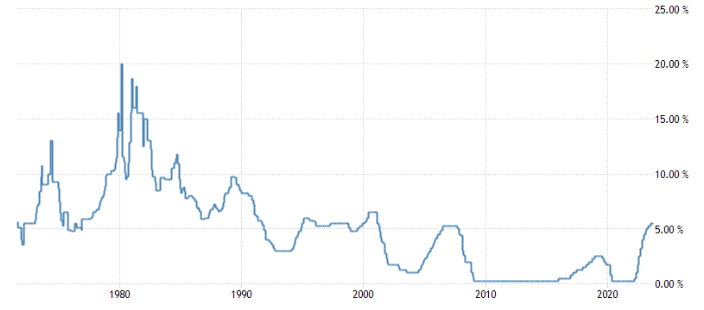The rate of interest is at its’ most basic level, the cost of money. The price you pay to borrow money for a house, car, or business.
If rates are low, the cost of borrowing is cheap, so more people can and do, thus more credit is created. Equally if the cost of borrowing rises, fewer people can afford to borrow.
The central bank base rate represents the cost of government debt, which as seen as the least risky debtor, is significantly less than an individual would pay in the market.
Rates are one of the key levers central banks use to influence the rate of credit creation, inflation, growth, and unemployment in an economy.
What causes interest rates to rise and fall?
When too much credit (money) is being created, it increases the rate of inflation as more units of money chase the same number of goods and services.
(See: What are the different types of inflation?)
When this happens, the central bank can raise rates to slow the rate of credit creation and thus inflation.
Conversely, when the economy is slow or during a recession, the central bank can cut rates to help increase the rate of credit creation. Hopefully leading to the creation of new jobs, and stimulating economic growth.
Because the economy is cyclical, it invariably creates conditions necessitating each policy response alternately. This in turn creating an interest rate hiking/cutting cycle. This is why rates change over time as you can see from the chart below.

Fed Funds Rate US – Source: TradingEconomics.com
See also: What is the credit multiplier effect?
